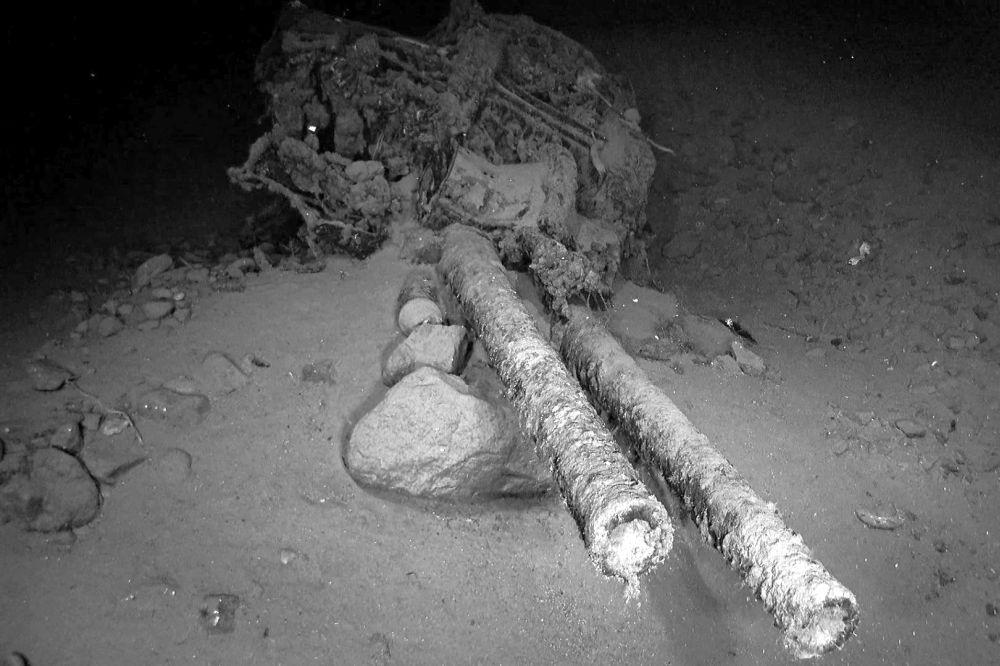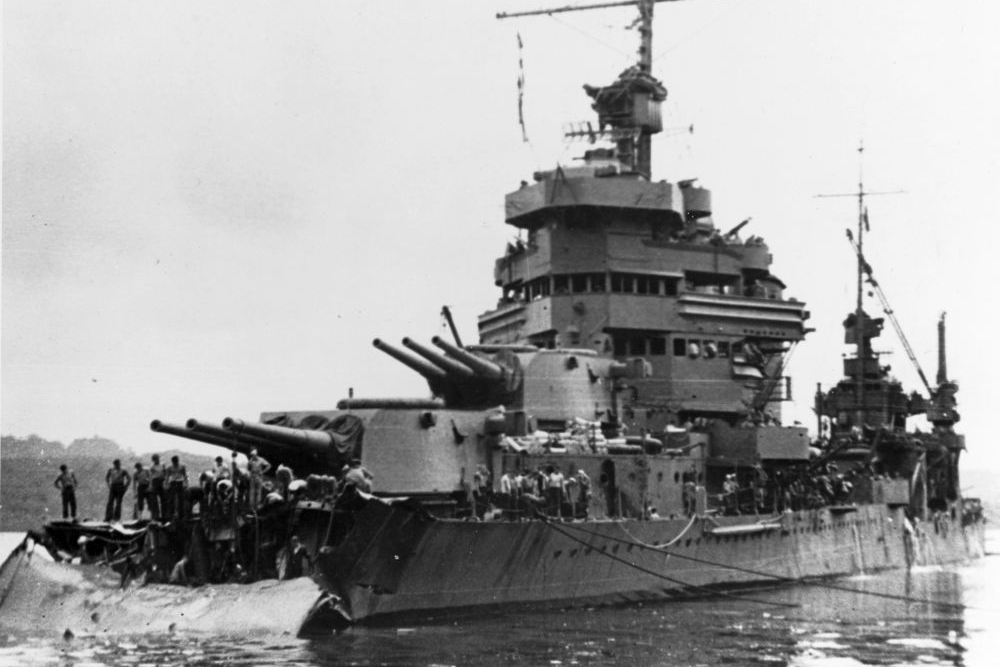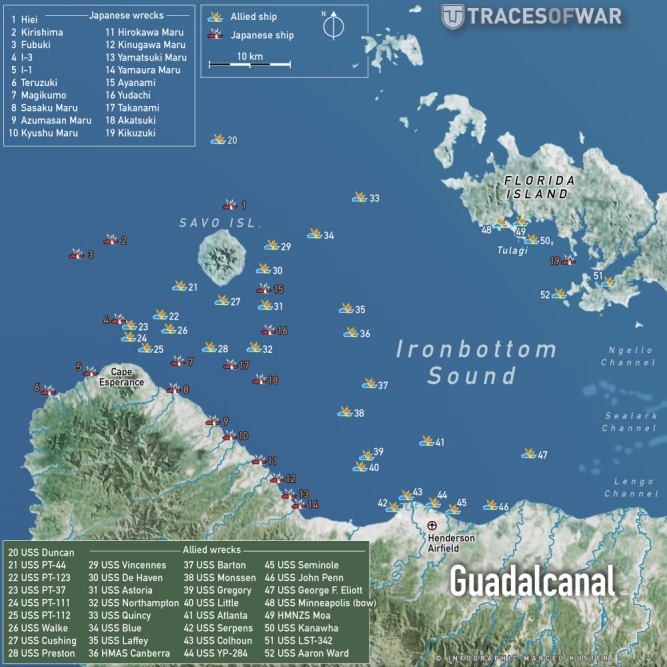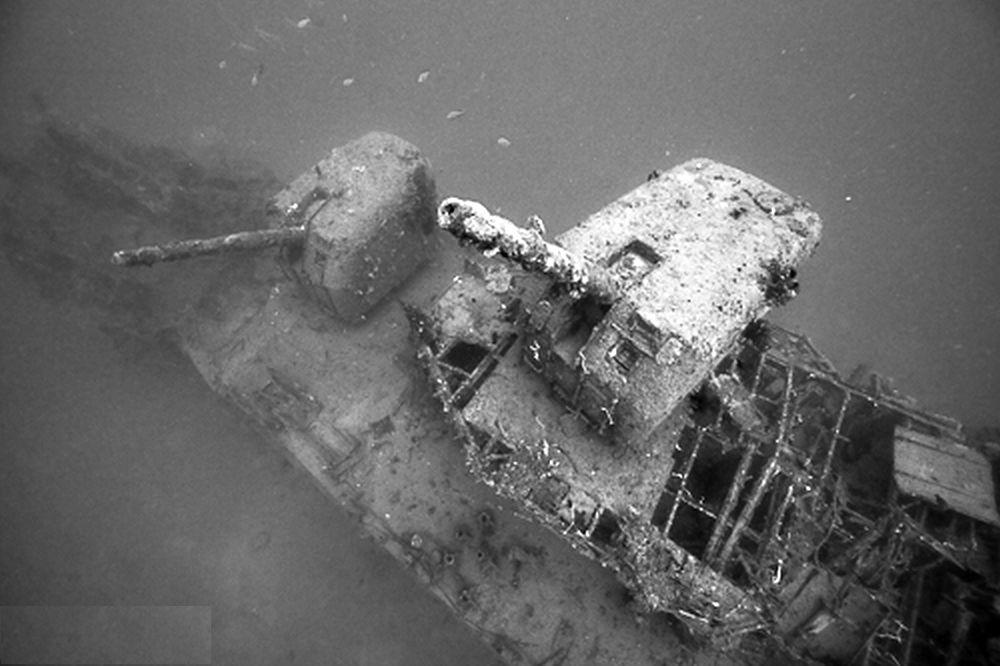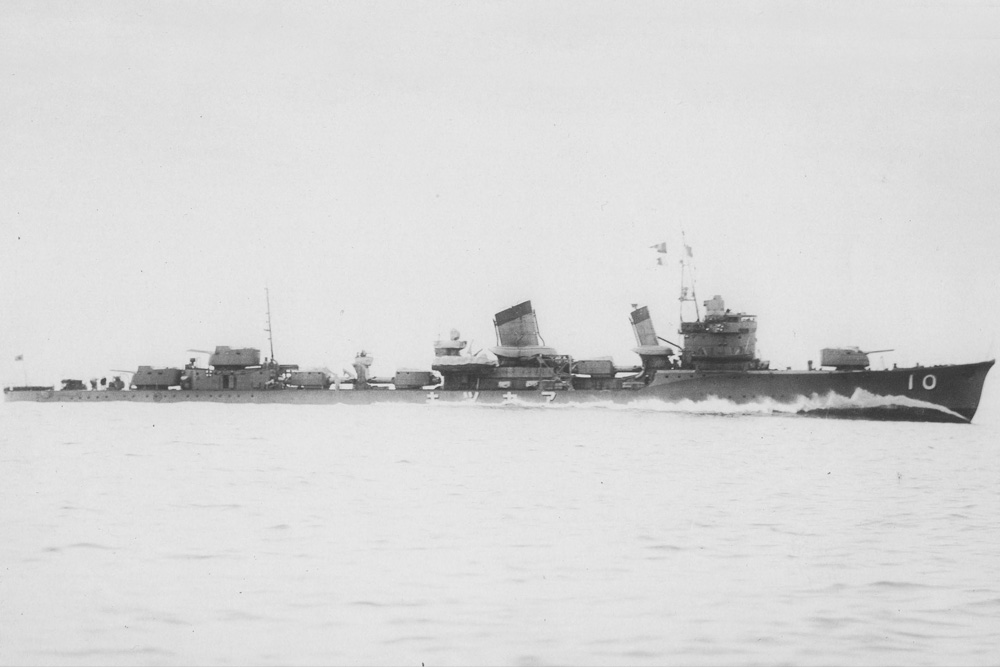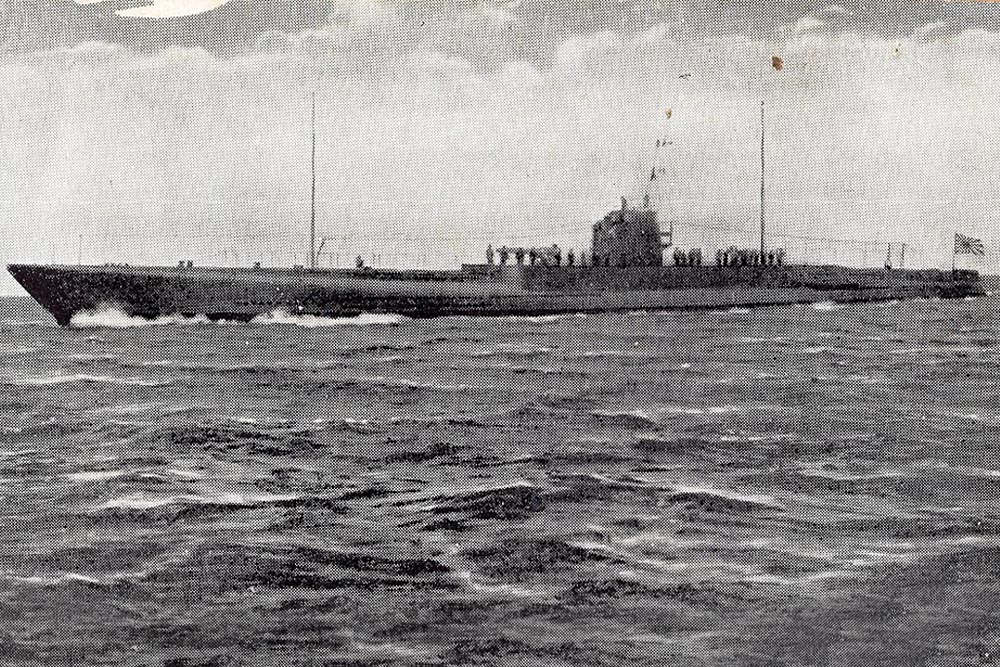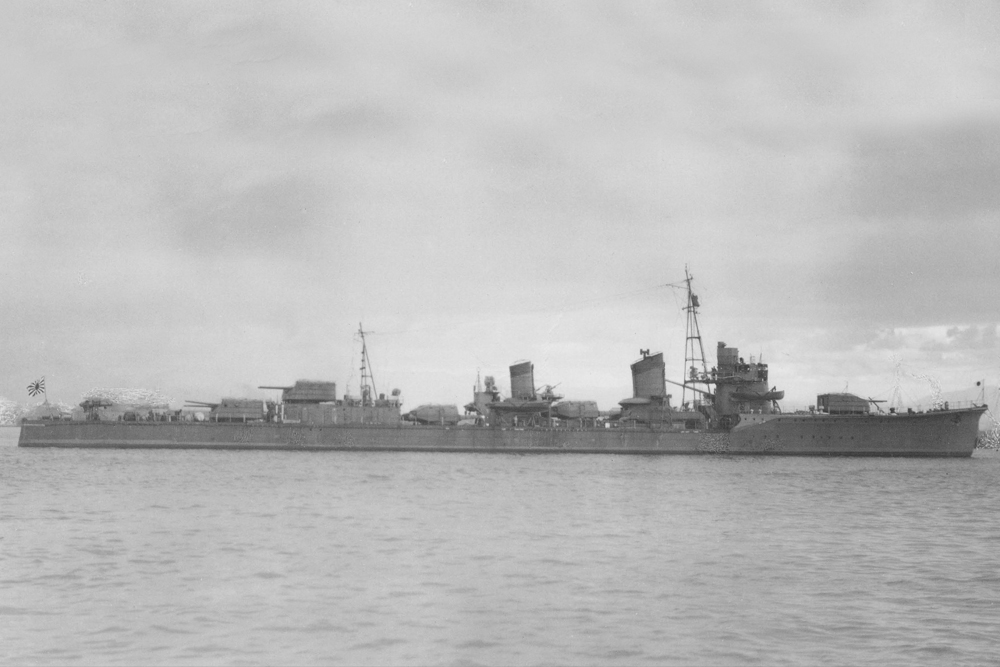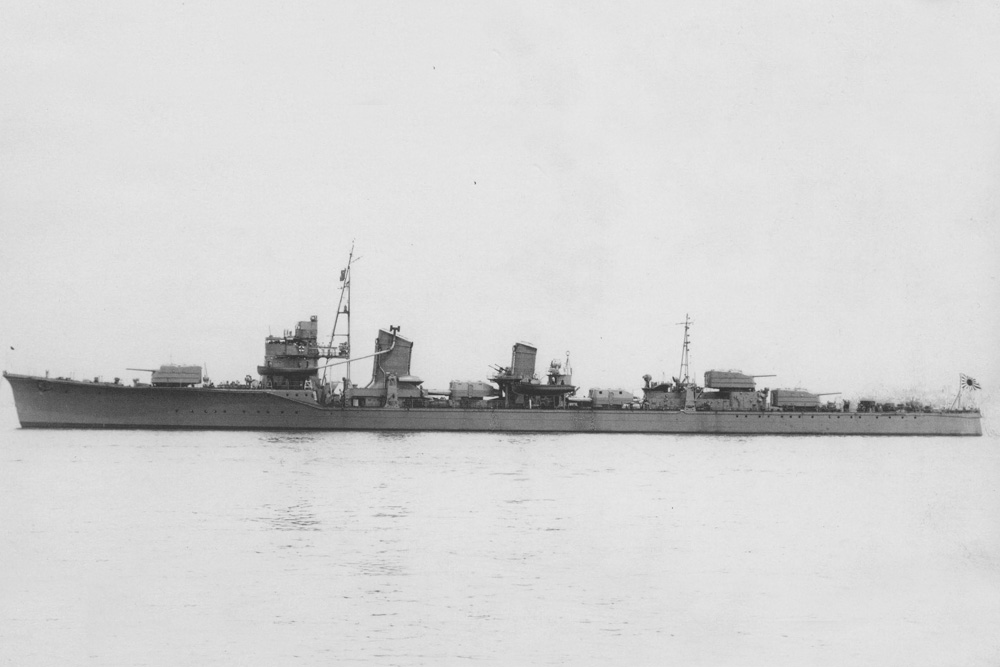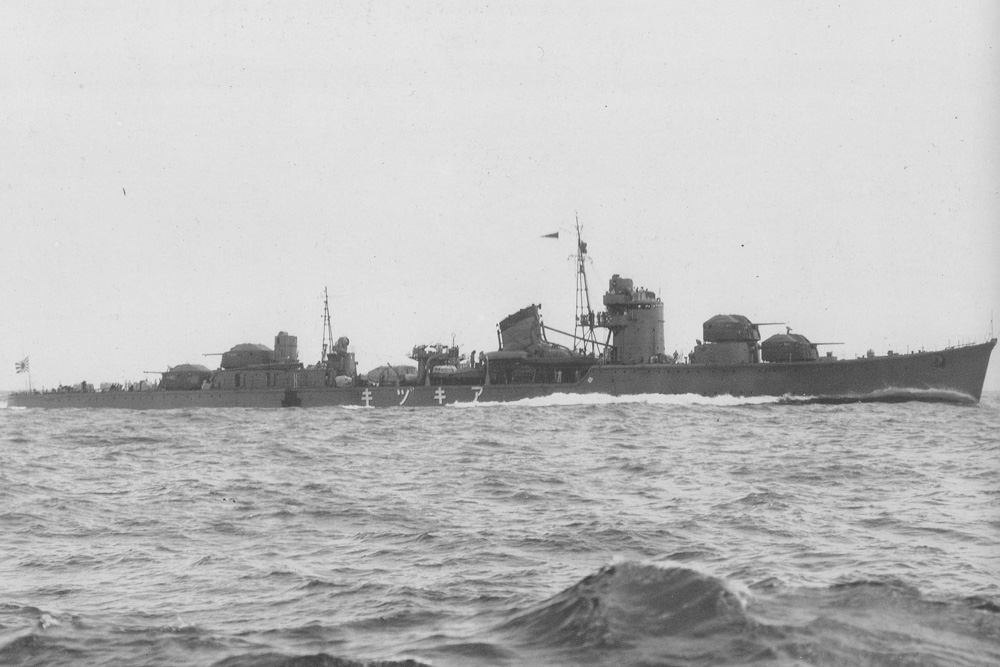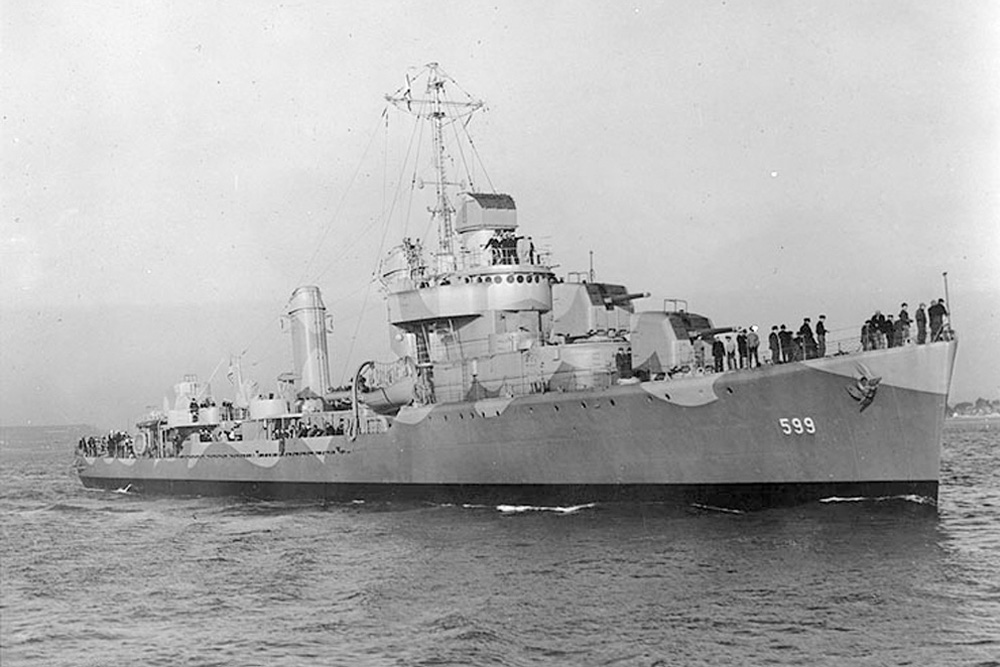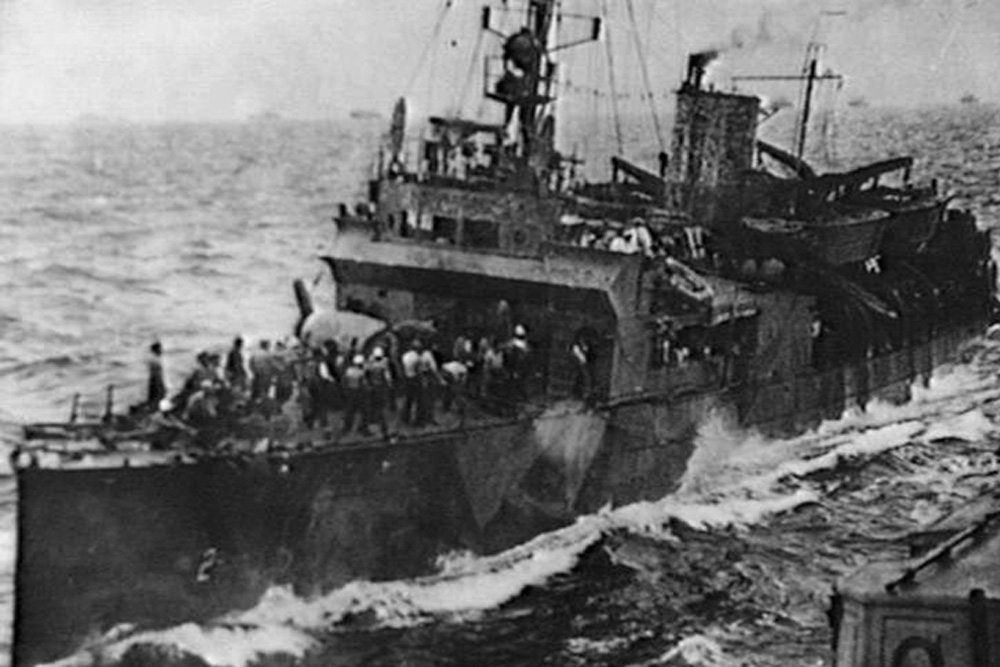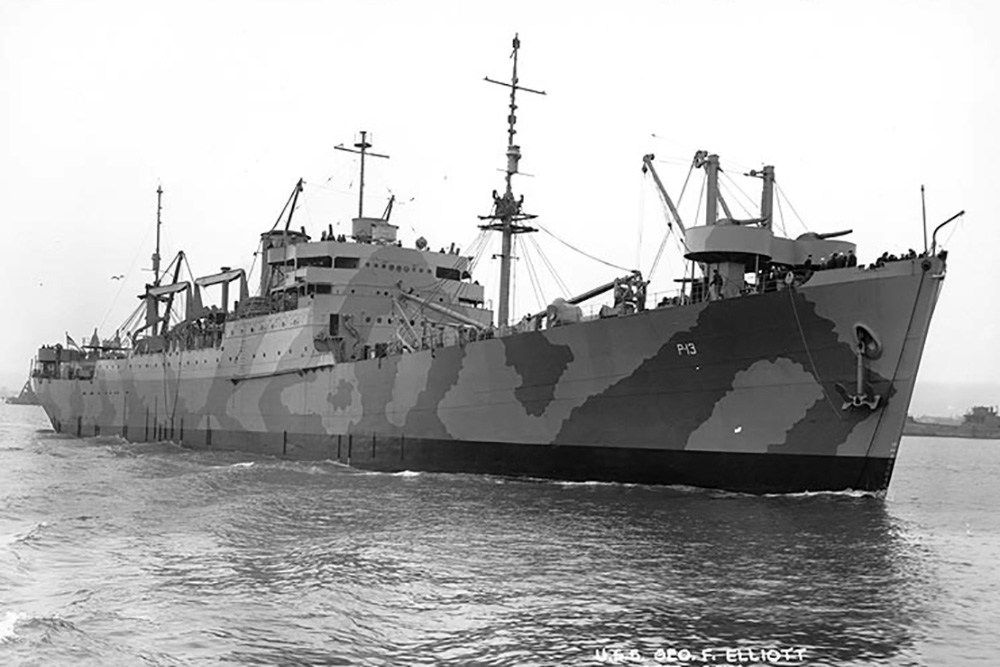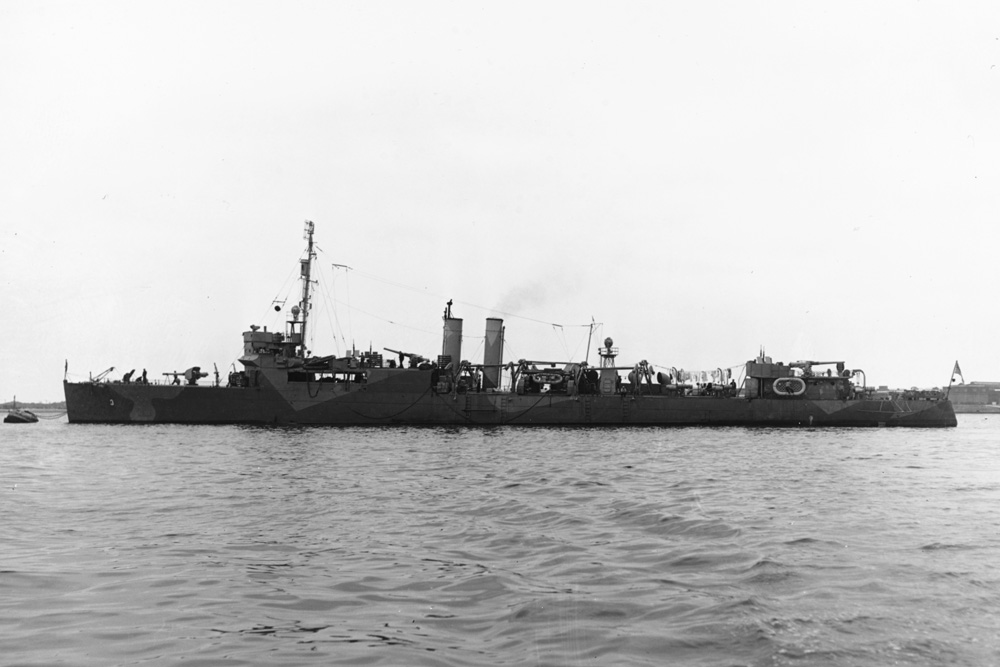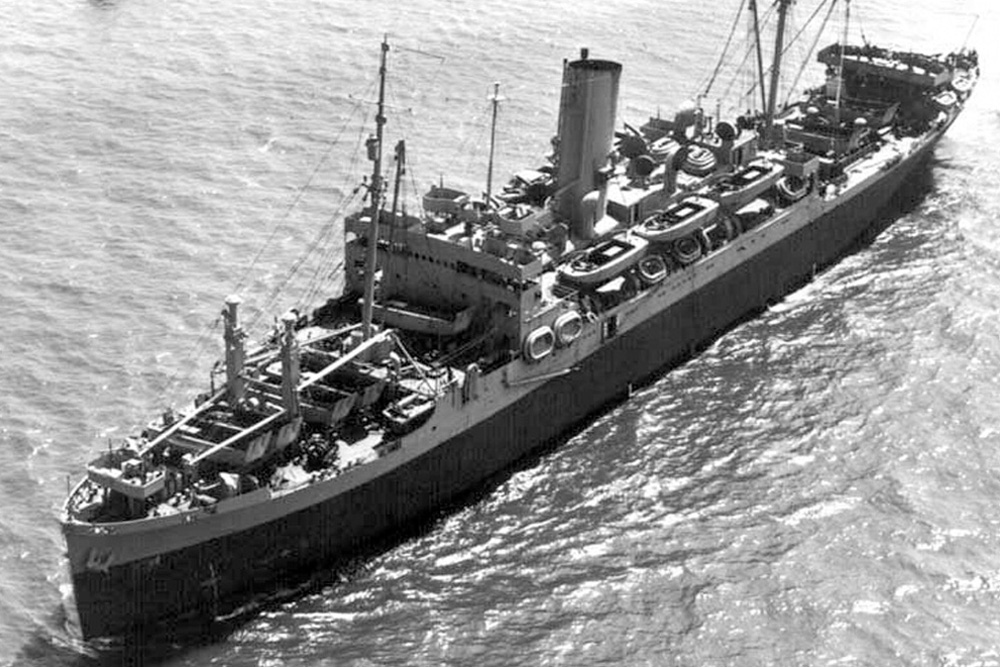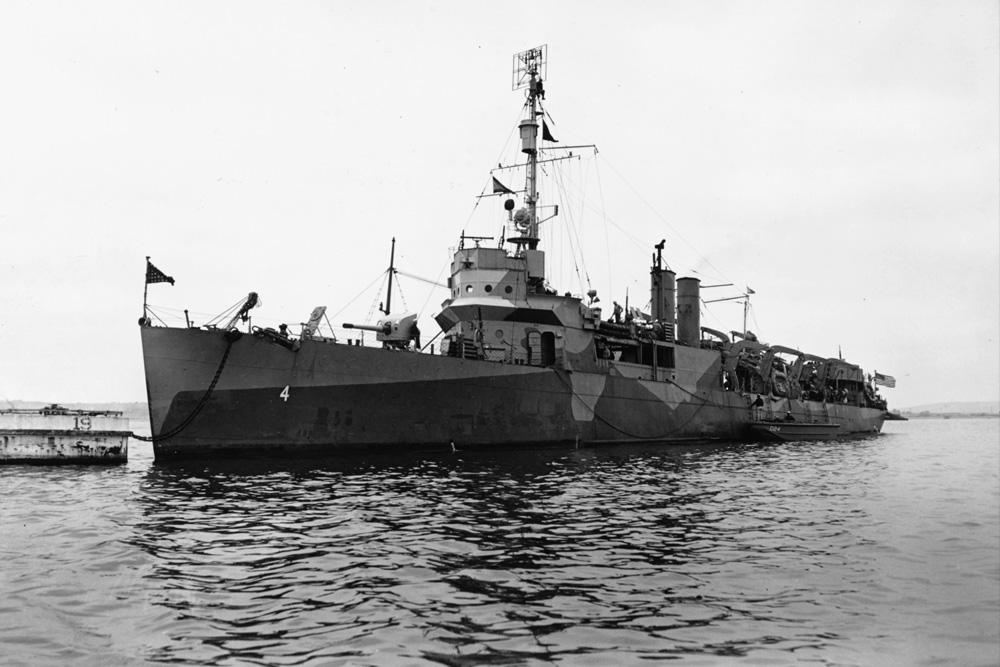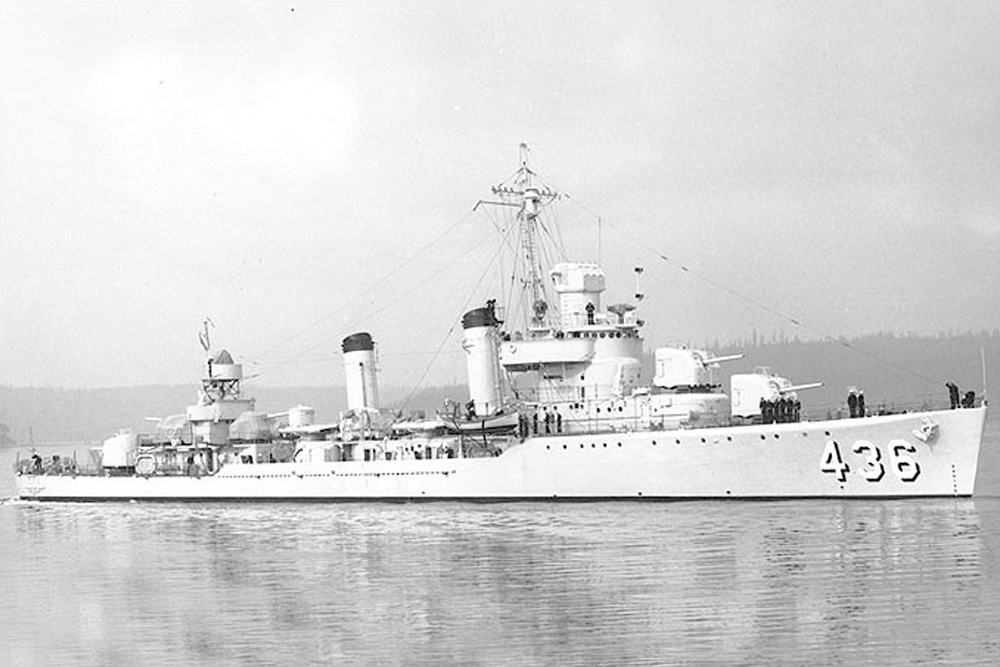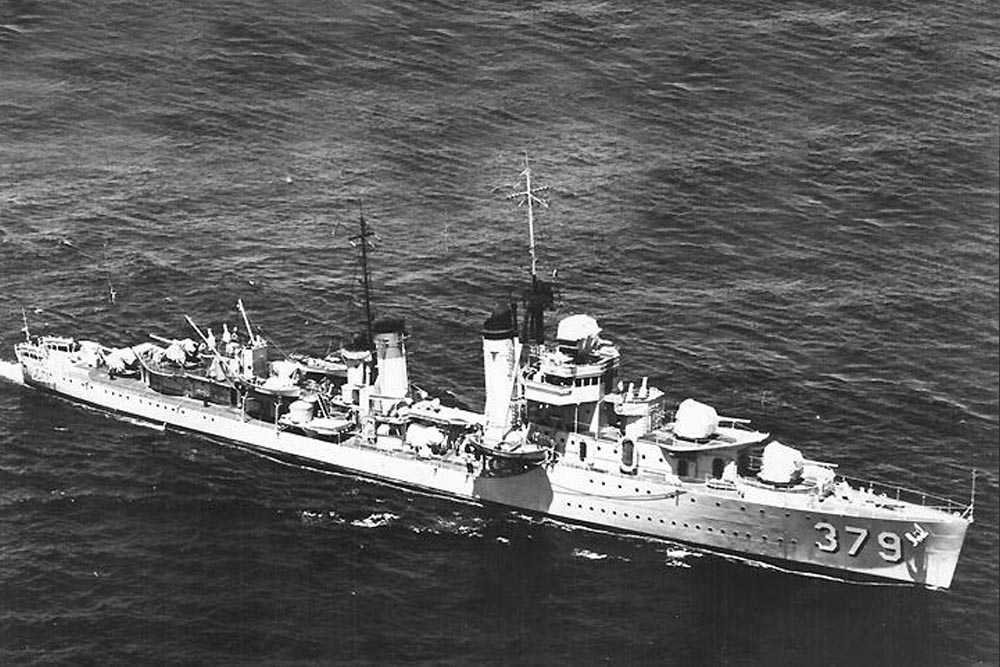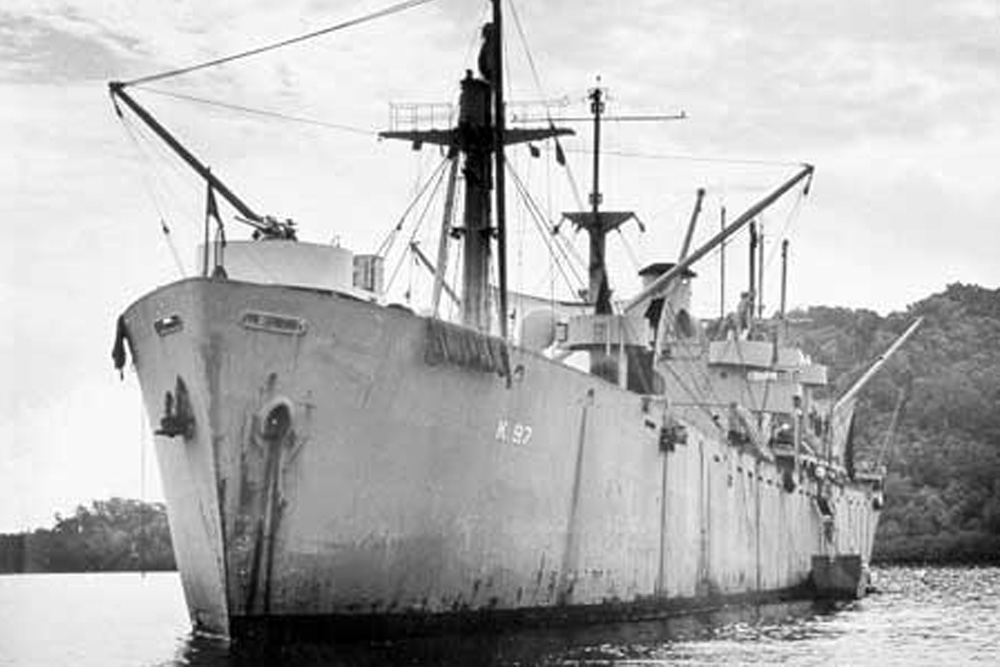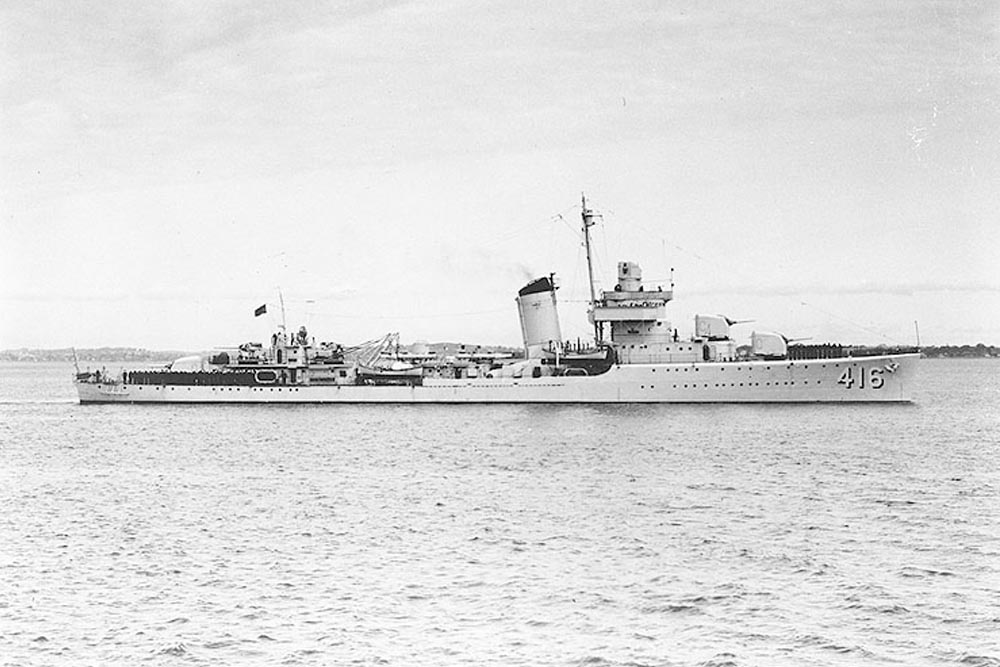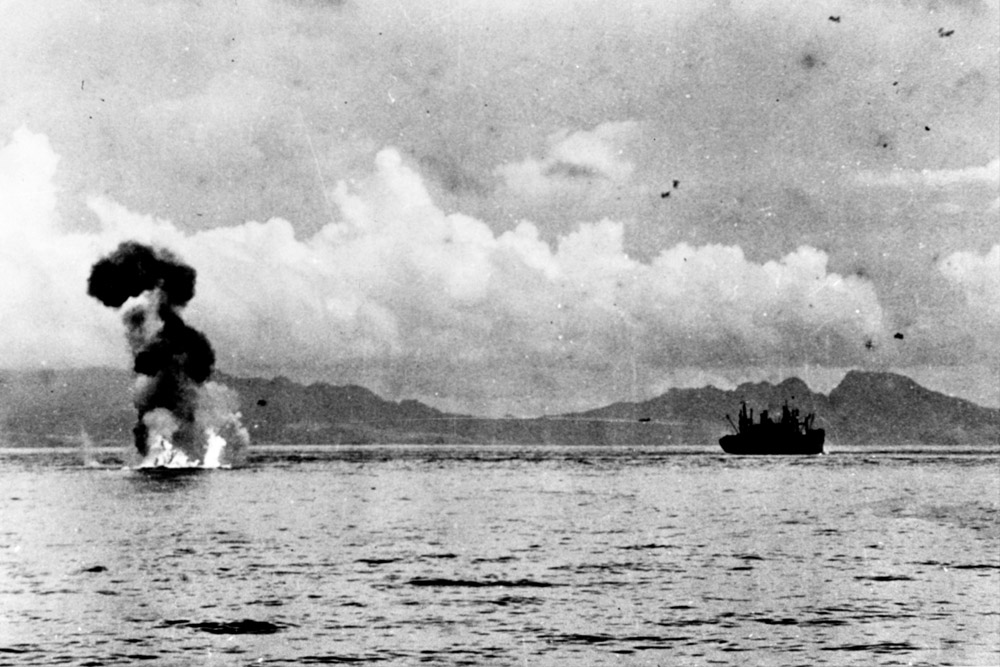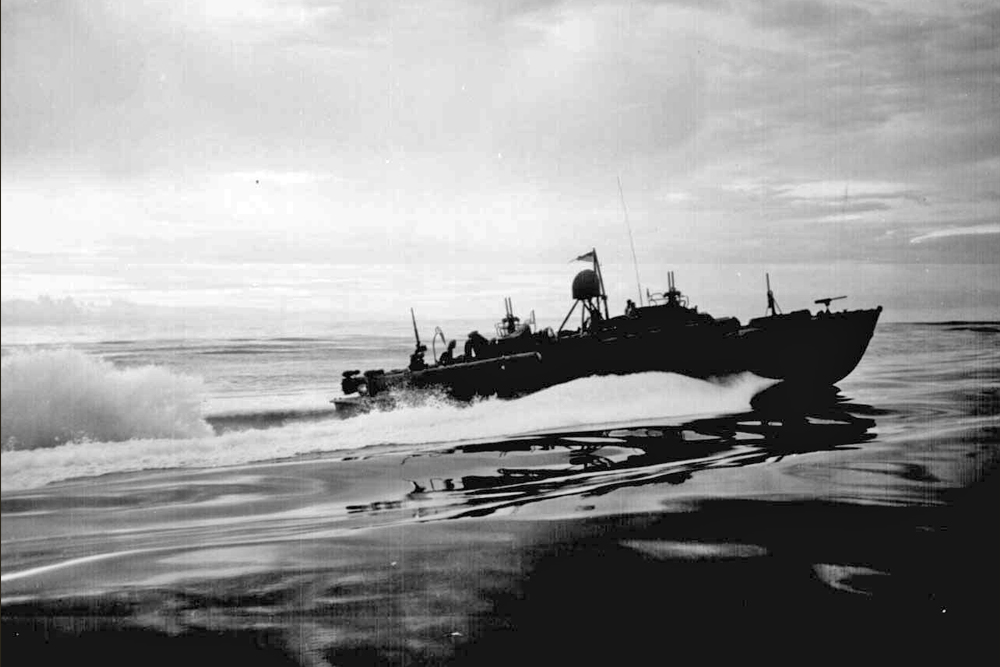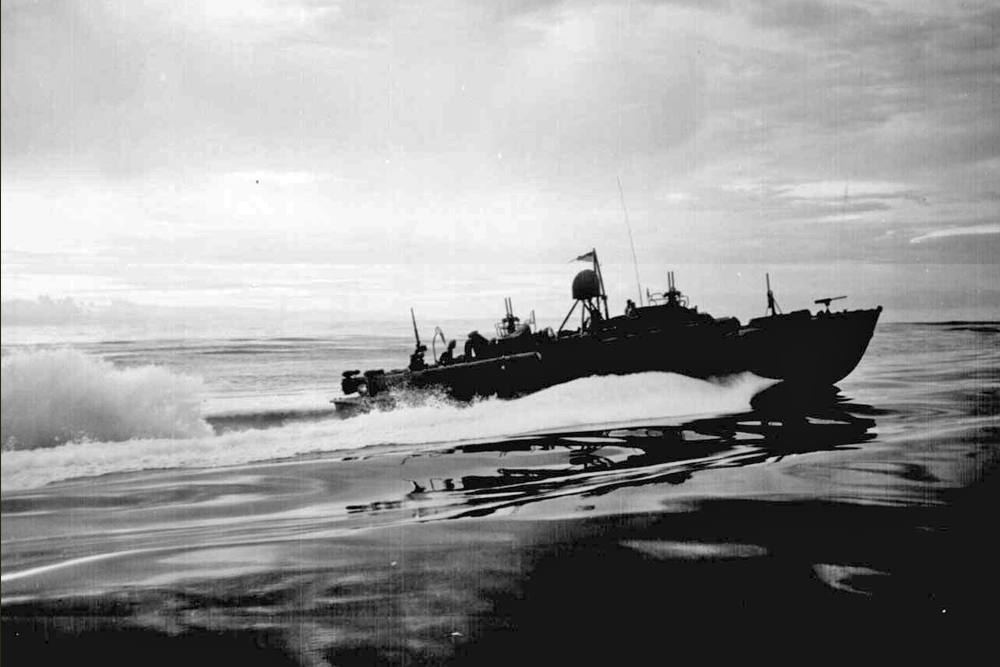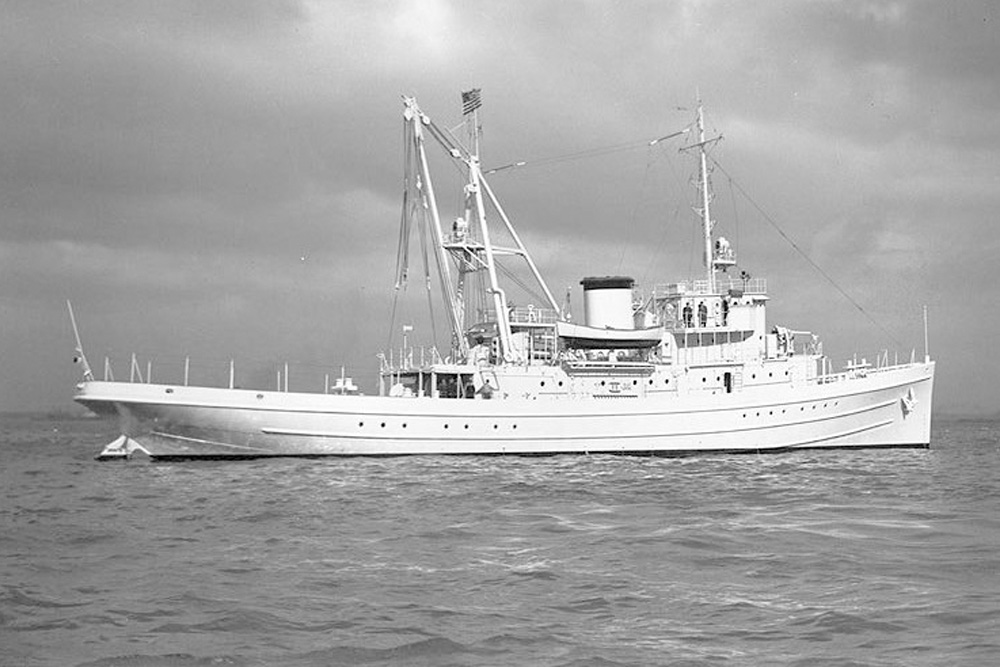Introduction
The Battle of Guadalcanal raged in the Pacific from August 7, 1942, to February 7, 1943. In the preceding months, the Japanese forces created a defensive belt in the territories they had conquered in the Pacific. To this end, they conquered islands where airports and port facilities could be built. The attempt to occupy Midway for this purpose was thwarted by the US Navy during the Battle of Midway. This was the first naval battle in the Pacific where the Americans prevailed and is often seen as the turning point in the Pacific War. But it was the American victory at the Battle of Guadalcanal, fought in the air, at sea and on land, that would ultimately be the real turning point of the Battle of the Pacific.
The six-month Battle of Guadalcanal included several large-scale battles on land and in the air, all of which were won by the Americans. However, it was also necessary to interrupt the supply of troops and supplies by both belligerents, which incited a total of 8 naval battles. In naval combat situations the Japanese were capable to inflict sizeable losses to the US Navy (which was assisted by ships of the Australian and New Zealand naval forces), thanks to their superior tactical experience in night battles, amongst others. The intensity and complexity of the naval battles, however, also boosted the learning curve of the allies. As the battles progressed and losses on both sides accumulated, it became apparent that Japan could no longer afford the losses in ships and experienced fighter pilots. The Americans, however, soon gained experience the hard way. On top of that, the military building programme in the USA started to deliver massive numbers of ships and aircraft to compensate for its losses
Most of the naval battles at Guadalcanal were fought in between Guadalcanal, Florida Island and Savo Island, all part of the British Solomon Islands. This stretch of water was known as Savo Sound, but after the Battle of Guadalcanal so many ships were sunk that it was called Ironbottom Sound or Ironbottomed Sound by Allied sailors. The nickname Iron Bottom Bay was also used, but the strait, which has an average depth of 600 meters, is now commonly known as Ironbottom Sound.
Definitielijst
- Midway
- Island in the Pacific where from 4 to 6 June 1942 a battle was fought between Japan and the United States. The battle of Midway was a turning point in the war in the Pacific resulting in a heavy defeat for the Japanese.
Allied ships in Ironbottom Sound
| Ship: | Sunk: | Sunk by or during: |
| Auxiliary transport USS George F. Elliott (AP-13) | August 8, 1942 | Mitsubishi G4M 1 bomber (Betty) |
| Heavy cruiser USS Quincy (CA-39) | August 9, 1942 | Battle of Savo Island |
| Heavy cruiser USS Vincennes (CA-44) | August 9, 1942 | Battle of Savo Island |
| Heavy cruiser USS Astoria (CA-34) | August 9, 1942 | Battle of Savo Island |
| Heavy cruiser HMAS Canberra (D33) | August 9, 1942 | Heavily damaged during Battle of Guadalcanal and subsequently sunk by American destroyers |
| Destroyer USS Blue (DD-387) | August 23, 1942 | Heavily damaged by torpedo from Japanese destroyer Kawakaze and subsequently sunk by American destroyers |
| Destroyer converted for transport duties USS Colhoun (APD-2) | 30 augustus 1942 | Aichi D3A carrier-based dive bombers (Val) |
| Destroyer converted for transport duties USS Gregory (APD-3) | 5 september 1942 | Gunfire from Japanese destroyers Yudachi (Dai-68), Hatsuyuki (Dai-37) and Murakumo (Dai-39) |
| Destroyer converted for transport duties USS Little (APD-4) | 5 september 1942 | Gunfire from Japanese destroyers Yudachi (Dai-68), Hatsuyuki (Dai-37) and Murakumo (Dai-39) |
| Destroyer USS Duncan (DD-485) | October 12, 1942 | Battle of Cape Esperance |
| Fleet tug USS Seminole (AT-65) | October 25, 1942 | Gunfire from Japanese light cruiser Abukuma (1923) |
| Pastrol vessel USS YP 284 | October 25, 1942 | Gunfire from Japanese light cruiser Abukuma (1923) |
| Destroyer USS Laffey (DD-459) | November 13, 1942 | Battle of Guadalcanal |
| Destroyer USS Cushing (DD-376) | November 13, 1942 | Battle of Guadalcanal |
| Destroyer USS Monssen (DD-436) | November 13, 1942 | Battle of Guadalcanal |
| Destroyer USS Barton (DD-599) | November 13, 1942 | Battle of Guadalcanal |
| Light cruiser USS Atlanta (CL-51) | November13, 1942 | Heavily damaged during Battle of Guadalcanal and sunk by own crew |
| Destroyer USS Preston (DD-379) | November 14, 1942 | Battle of Guadalcanal |
| Destroyer USS Walke (DD-416) | November 15, 1942 | Battle of Guadalcanal |
| Heavy cruiser USS Northampton (CA-26) | November 30, 1942 | Battle of Tassafaronga |
| Motor torpedo boat USS PT-44 | December 12, 1942 | Gunfire from Japanese destroyers Kawakaze (Dai-73) and Suzukaze (Dai-74) |
| Motor torpedo boat USS PT-112 | January 11, 1943 | Gunfire from Japanese destroyer |
| Motor torpedo boat USS PT-37 | February 1, 1943 | Gunfire from Japanese destroyer Kawakaze (Dai-73) |
| Motor torpedo boat USS PT-111 | February 1, 1943 | Gunfire from Japanese destroyer Kawakaze (Dai-73) |
| Motor torpedo boat USS PT-123 | February 1, 1943 | Mitsubishi F1M2 reconaissance floatplane (Pete) |
| Destroyer USS De Haven (DD-469) | February 1, 1943 | Aichi D3A carrier-based dive bombers (Val) |
| Replenishment oil tanker USS Kanawha (AO-1) | April 7, 1943 | Aichi D3A carrier-based dive bombers (Val) |
| Minesweeper HMNZS Moa (T233) | April 7, 1943 | Aichi D3A carrier-based dive bombers (Val) |
| Destroyer USS Aaron Ward (DD-483 | April 7, 1943 | Aichi D3A carrier-based dive bombers (Val) |
| Tank landingship USS LST-342 | July 18, 1943 | Torpedoed, towed to Purvis Bay and vacated |
| Auxiliary transport USS John Penn (APA-23) | August 13, 1943 | Nakajima B5N carrier-based torpedo bombers (Kate) |
| Auxiliary transportschip USS Serpens (AK-97) | January 29, 1945 | Loaded with depth chargers and exploded, cause unknown |
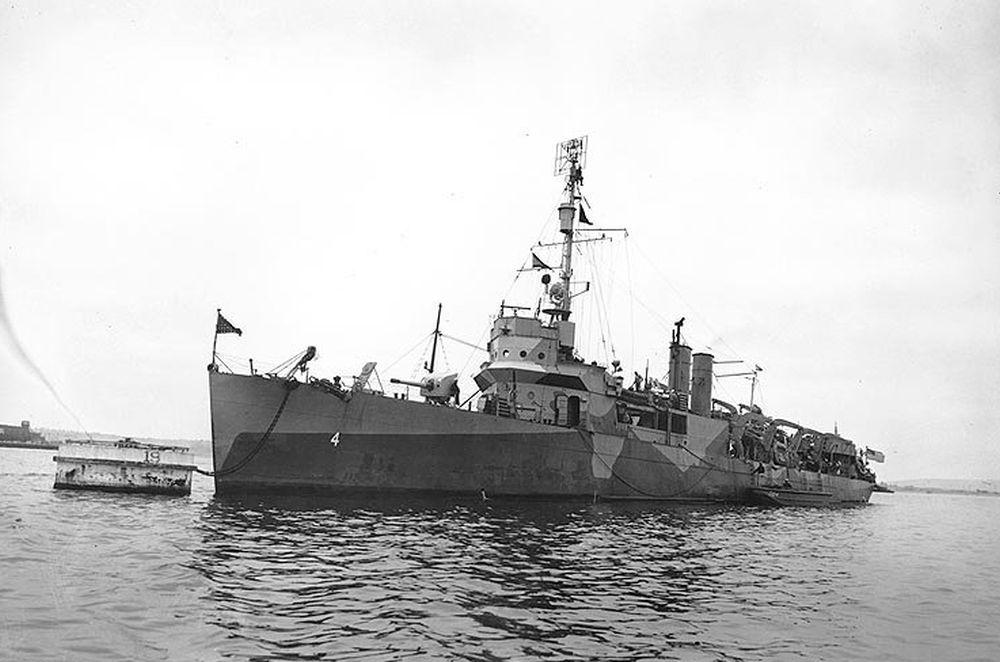
USS Little APD-4, a Wickes-class destroyer and converted for transport duties, moored at a buoy, 1942. Source: Navsource
Ship 48 on the map (see next chapter) depicts the location where the bow rests of the American heavy cruiser USS Minneapolis (CA-36). The American warship suffered two torpedo hits during the Battle of Tassafaronga. However, the crew was able to reach Tulagi where the ship was subsequently camouflaged to enable temporary repair. The heavily damaged bow was removed by its own crew with the help of Seabees, construction workers from the US Navy. The Minneapolis was then able to sail under its own power to the Mare Island Naval Shipyard, in Vellejo forty kilometers north of San Francisco, where the ship was fully repaired and modernised.
Definitielijst
- cruiser
- A fast warship with 8,000 – 15,000 ton displacement, capable to perform multiple tasks such as reconnaissance, anti-aircraft defence and convoy protection.
- Destroyer
- Very light, fast and agile warship, intended to destroy large enemy ships by surprise attack and eliminating them by using torpedoes.
- torpedo
- A weapon of war. A cigar shaped body fitted with explosives and a propulsion and control mechanism. Intended to target after launch a nearby enemy ship and disable it by underwater explosion.
Japanse ships in Ironbottom Sound
| Ship: | Sunk: | Sunk by or during: |
| Destroyer Kikuzuki (Dai-31) | May 5, 1942 | American fighter aircraft of USS Yorktown (CV-5) |
| Destroyer Fubuki (Dai-35) | October 11, 1942 | Battle of Cape Esperance |
| Transport Kyushu Maru | October 15, 1942 | American aircraft from Guadalcanal |
| Transport Azumasan Maru | October 15, 1942 | American aircraft from Guadalcanal |
| Transport Sasaku Maru | October 15, 1942 | American aircraft from Guadalcanal |
| Destroyer Yudachi (Dai-68) | November 13, 1942 | Battle of Guadalcanal |
| Destroyer Akatsuki (Dai-55) | November 13, 1942 | Battle of Guadalcanal |
| Battleship Hiei | November 14, 1942 | Battle of Guadalcanal |
| Destroyer Ayanami (Dai-45) | November 15, 1942 | Second Battle of Guadalcanal |
| Battleship Kirishima (1915) | November 15, 1942 | Second Battle of Guadalcanal |
| Transport Yamaura Maru | November 15, 1942 | Second Battle of Guadalcanal |
| Transport Yamatsuki Maru | November 15, 1942 | Second Battle of Guadalcanal |
| Transport Kinugawa Maru | November 15, 1942 | Second Battle of Guadalcanal |
| Transport Hirokawa Maru | November 15, 1942 | Second Battle of Guadalcanal |
| Destroyer Takanami (Dai-115) | November 30, 1942 | Battle of Tassafaronga |
| Destroyer Teruzuki (Dai-105) | December 12, 1942 | Torpedoed by USS PT-37 and USS PT-40 |
| Submarine I-3 | December 8, 1942 | Torpedoed by USS PT-59 |
| Submarine I-1 | January 29, 1943 | Depth charges, gunfire and ramming by HMNZS Kiwi en HMNZS Moa |
| Destroyer Makigumo (Dai-111) | February 1, 1943 | Naval mine |
The destroyer Kikuzuki (Dai-31) was attacked by aircraft from the American aircraft carrier USS Yorktown (CV-5) on May 4, 1942, during the Japanese invasion of Tulagi. The auxiliary submarine chaser Toshi Maru No. 3 towed the badly damaged ship to the beach at Gavutu Island. During high tide on May 5, the destroyer sank. After the American capture of Tulagi in August 1942, the Japanese destroyer was salvaged by the American repair ship USS Prometheus (AR-3) for an unsuccessful attempt to retrieve classified documents. The hulk of Kikuzuki was left behind forever in Ghovana Bay on the island of Nggela Sule.
Definitielijst
- Battleship
- Heavily armoured warship with very heavy artillery.
- Destroyer
- Very light, fast and agile warship, intended to destroy large enemy ships by surprise attack and eliminating them by using torpedoes.
- invasion
- Armed incursion.
- mine
- An object filled with explosives, equipped with detonator which is activated by either remote control or by colliding with the targeted object. Mines are intended to destroy of damage vehicles, aircrafts or vessels, or to injure, kill or otherwise putting staff out of action. It is also possible to deny enemy access of a specific area by laying mines.
Epilogue
Many more ships were sunk outside of Ironbottom Sound during the Battle of Guadalcanal. Particularly during the Battle of the Eastern Solomon Islands on August 24 and 25, 1942 and the Battle of the Santa Cruz Islands from October 25 to 27, 1942, many more ships were lost. Both the US Navy and the Imperial Japanese Navy some of their capital ships during these battles, including two aircraft carriers: USS Hornet (CV-8) and Ryuho (1942). In addition, the American light aircraft carrier USS WASP (CV-7) was lost on September 15 during one of its many resupply operations. Furthermore, there are numerous aircraft wrecks in both Ironbottom Sound and in the waters around the Solomon Islands.
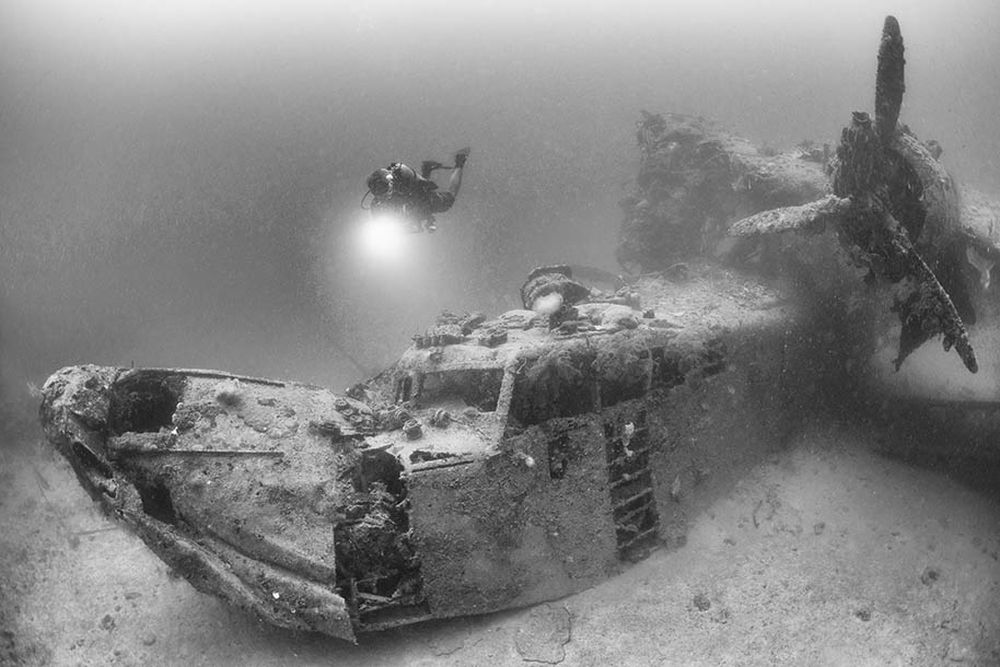
The wreck of a Japanese Kawanishi H6K flying boat (Mavis), sunk on August 7, 1942, during the American conquest of Tulagi. Source: Wreck Site
Not all sunken ships in Ironbottom Sound have yet been located. Some sank at night or the exact positions were not accurately documented. During an expedition by Dr. Robert Ballard in 1991 and 1992, some wrecks were filmed by a so-called Remotely Operated Vehicle (ROV), a remote-controlled mini-submarine. But despite all efforts, Dr. Ballard was unable to provide a definitive answer regarding the exact coordinates of most of the wrecks.Only a few wrecks are accessible and then only for experienced scuba divers. Some of the sunken Japanese transports accessible to divers on the north coast of Guadalcanal include Sasaku Maru, Azumasan Maru, Kyushu Maru, Hirokawa Maru, Kinugawa Maru, Yamazuki Maru and Yamaura Maru and the submarine I-1. These wrecks are all located at a depth of twenty to 62 meters. The wreck of USS Seminole (AT-65), at a depth of 33.5 meters, is only accessible during the dry season. Some wrecks that are only accessible to specially trained and equipped divers are USS Atalanta (CL-51) at a depth of 131 meters and USS Aaron Ward (DD-483) which lies at a depth of seventy meters.
All shipwrecks in Ironbottom Sound are considered war graves and as such should be left intact as much as possible. There are still thousands of crew members on board found their final resting place here. Since the 1990s there have been several calls from the government of the Solomon Islands to salvage some wrecks due to oil spills. However, neither the American nor the Japanese government has yet responded to this request.
Information
- Article by:
- Peter Kimenai
- Translated by:
- Simon van der Meulen
- Published on:
- 12-01-2025
- Feedback?
- Send it!
Related sights
Sources
- EVANS, D.C., The Japanese navy in World War II, Naval Institute Press, Annapolis, 2017.
- HORE, P, Slagschepen, Veltman Uitgevers, Utrecht, 2006.
- IRELAND, B., Vliegdekschepen, Veltman Uitgevers, Utrecht, 2007.
- KENT G., Guadalcanal, Standaard Uitgeverij, Antwerpen, 1991.
- WEST, A. & MATTSON, G, De oorlog in de Pacific, Zuidnederlandse Uitgeverij N.V., Aartselaar.
